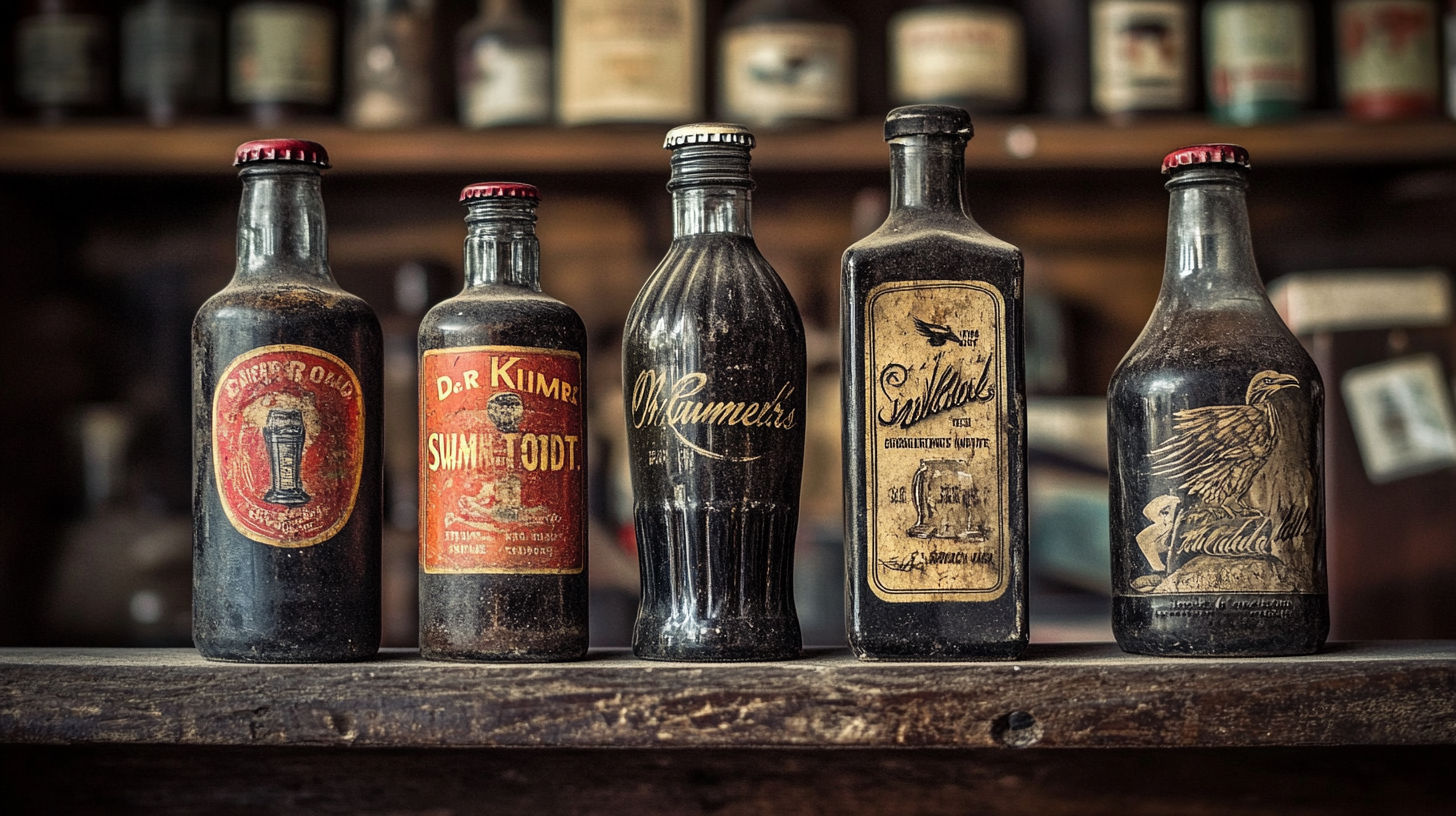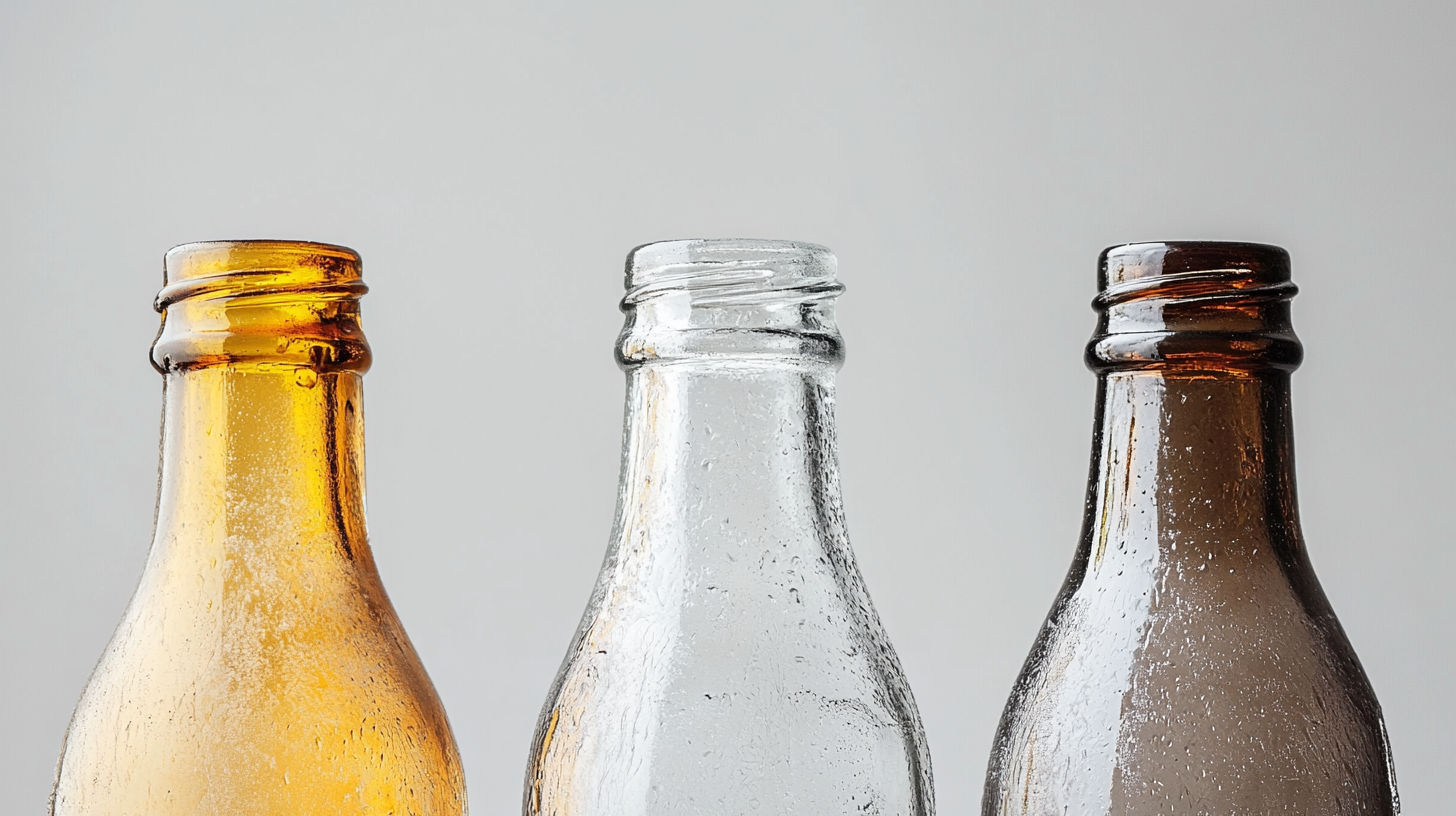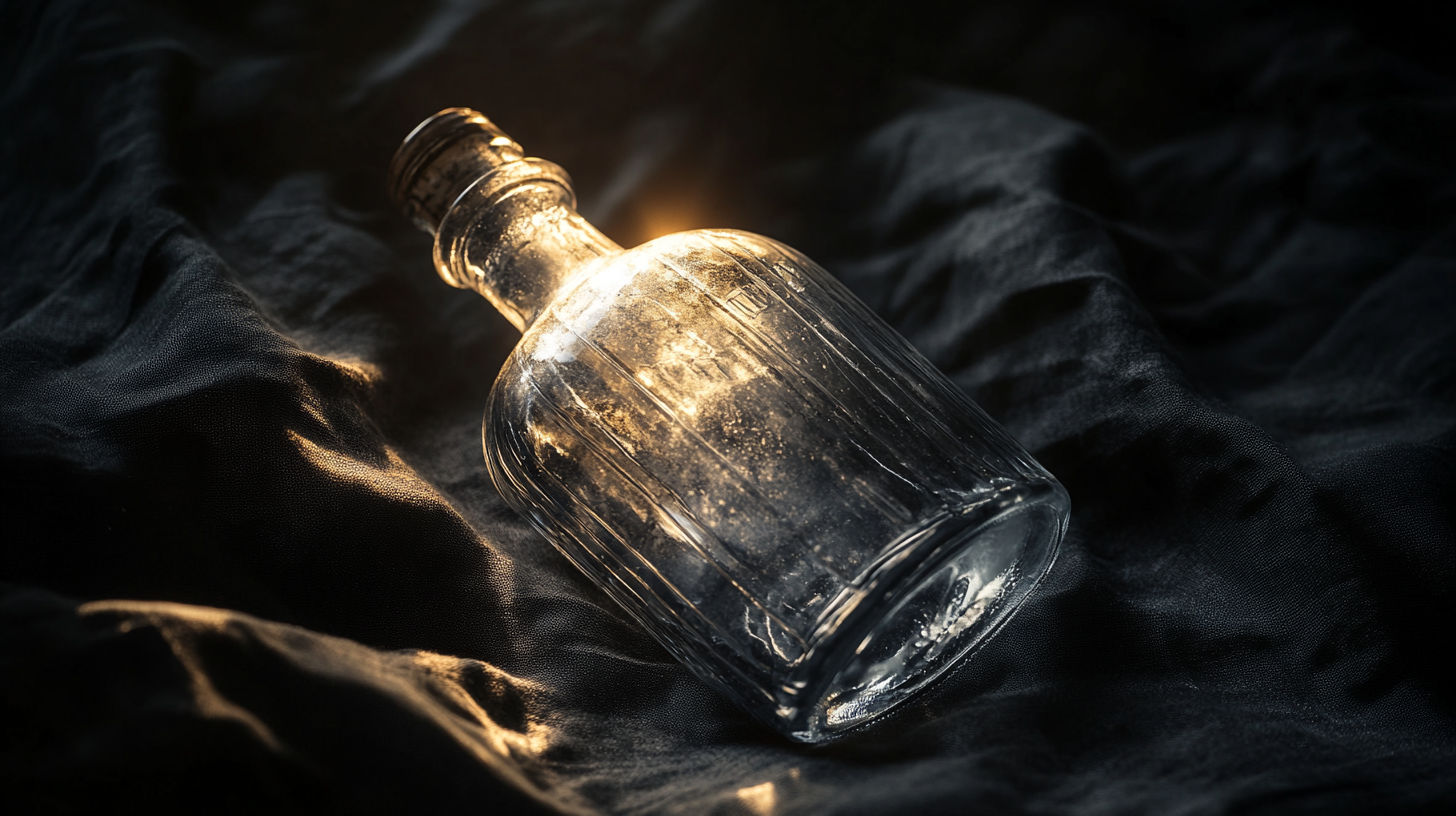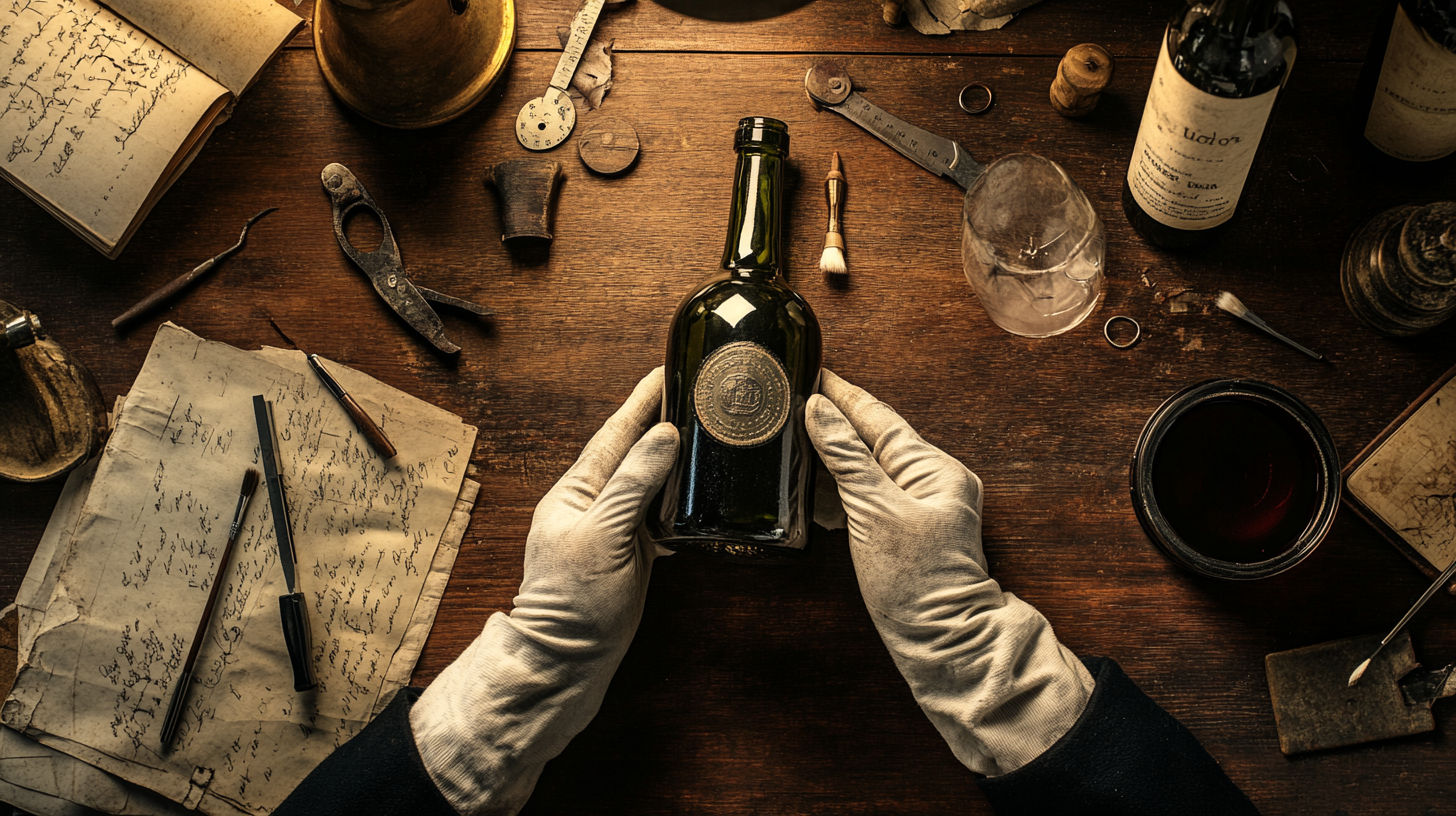Introduction to Old Bottle Identification Marks

Whether you’ve discovered an old bottle while metal detecting, inherited family heirlooms, or are building a dedicated collection, understanding how to read these marks is essential for proper identification. In this comprehensive guide, we’ll explore the various types of bottle identification marks, what they mean, and how they can help you determine a bottle’s approximate age, manufacturer, and potential value.
Key Facts About Antique Bottle Marks
- 1860s-1920s: Peak period for embossed bottle production
- 25,000+: Approximate number of different glass manufacturers marks documented
- 400%: Potential increase in value for bottles with rare or historical maker’s marks
Types of Bottle Identification Marks
Pontil Marks
Among the oldest and most distinctive bottle identification features are pontil marks. These circular scars on the base of a bottle indicate it was made using a blowpipe and pontil rod during handblown production, typically predating the 1860s. According to the Society for Historical Archaeology, these marks are key diagnostic characteristics of mid-19th century and earlier bottles.
Pontil marks appear in several varieties:
- Open Pontil: A rough, circular scar with sharp edges
- Sand Pontil: A grainy, sandpaper-like texture within the circular area
- Iron Pontil: A reddish-brown or graphite-colored deposit within the scar, sometimes called a “improved pontil”
- Glass-tipped Pontil: A smooth, glass-covered circular mark
The presence of any pontil mark generally indicates a bottle made before 1865, with some regional variations, making these bottles particularly valuable to collectors.
Embossed Markings

Embossed markings—raised letters, numbers, or designs molded directly into the glass—are common on bottles manufactured from the 1870s through the early 1900s. According to the glass bottle marks database, these embossings may appear on the bottle’s:
- Base: Often containing maker’s marks or bottle codes
- Sides: Frequently displaying product names, company information, or city of origin
- Shoulder: Sometimes showing product volume or manufacturer details
- Neck: Occasionally including dating codes or product information
Embossed statements like “Federal law forbids sale or reuse of this bottle” indicate the bottle was produced during Prohibition or shortly after (1933-1964), while “NOT TO BE REFILLED” emerged in the post-1960s era.
Maker’s Marks
Manufacturer’s marks are among the most useful identification tools for bottle collectors. These symbols, initials, or logos typically appear on the bottle’s base and identify which glass company produced the container. The SHA Bottle website provides an extensive database of these marks.
Common maker’s marks include:
- “I” inside a diamond (Illinois Glass Company, 1916-1929)
- “O-I” inside a diamond (Owens-Illinois, 1929-1954)
- “B” inside a circle (Brockway Glass Company, 1925-1983)
- “F” inside a hexagon (Foster-Forbes Glass Company, 1942-1995)
Identifying the maker’s mark can significantly narrow down a bottle’s age and origin, especially when used in conjunction with other identification features.
Dating Bottles by Manufacturing Characteristics

Mold Seams
Mold seams are the vertical lines that run up the sides of a bottle where sections of the mold met during production. Their height and appearance changed over time with advances in bottle-making technology:
- Pre-1860: Faint or no visible seams (free-blown bottles)
- 1860s-1880s: Seams extending up to the bottle shoulder, then disappearing
- 1880s-1910s: Seams extending to the neck, but not all the way to the lip
- Post-1910: Seams running completely from base to top of the lip (machine-made bottles)
According to bottle dating resources, the presence and height of these mold seams is one of the most reliable dating tools available to collectors.
Base Marks and Codes
The base of a bottle often contains a wealth of information:
- Numbers: May indicate mold numbers, plant codes, or date codes
- Symbols: Can represent the glass maker or specific manufacturing techniques
- Letters: Often abbreviations for the manufacturing company
- Dot patterns: In more modern bottles, these can indicate precise manufacturing dates
For bottles produced after 1930, many manufacturers began using more standardized date coding systems. For example, Owens-Illinois used a two-digit year code to the right of their logo from the 1930s through the 1950s.
Antique Bottle Value by Age and Features
| Category | Price Range | Notes |
|---|---|---|
| Pre-1860 Pontil-Marked Bottles | $100-$1,000+ | Higher values for colored glass, embossing, and perfect condition |
| 1860-1900 Applied-Lip Bottles | $40-$250 | Value varies by embossing, color, and rarity |
| 1900-1920 Early Machine-Made | $20-$100 | Common styles less valuable unless rare colors/embossing |
| 1920-1950 Machine-Made Bottles | $5-$50 | Limited collector value unless unique or historical significance |
Note: Price ranges are approximate and can vary based on condition, rarity, and market demand.
Lip and Finish Types
The “finish” refers to the top portion of the bottle including the lip. Different finish styles were prevalent during specific eras:
- Applied Lip/Finish: Hand-tooled separately from the bottle body (pre-1910)
- Tooled Finish: Applied glass that was then reshaped with tools (1870s-1910s)
- Machine-Made Finish: Uniform, seamless appearance with mold seams extending through the finish (post-1910)
According to Antique Trader, the finish style can be one of the most reliable indicators of a bottle’s approximate age.
Evolution of Bottle Manufacturing Techniques
Free-Blown Era
Bottles were entirely hand-blown without molds, featuring pontil marks on bases and irregular shapes. Extremely rare and valuable today.
Snap-Case Era
Pontil rods replaced by snap-case tools, eliminating pontil marks. Mold seams typically end at shoulder. Applied lips still common.
Semi-Automatic Period
Transition period with increasingly mechanized processes. Mold seams extend higher, tooled finishes become standard.
Fully Automatic Era
Owens Automatic Bottle Machine revolutionizes production. Mold seams run all the way to the top. Standardized designs become prevalent.
Modern Manufacturing
Advanced technology allows for precise, high-speed production. Coded dating systems become standardized.
Decoding Numbers and Symbols on Bottle Bases

Common Numeric Codes
According to Glass Bottle Marks, numbers on bottle bases typically represent:
- Mold Numbers: Single digits or small numbers that identify specific molds used in production
- Plant Codes: Numbers indicating which factory produced the bottle
- Date Codes: Often appearing as one or two digits representing the year of manufacture
- Liquor Bottle Codes: Special numeric systems used for distillery products
For bottles made after 1930, date codes became more standardized. For instance, Owens-Illinois bottles from 1940 would typically show “40” or “4.” positioned near the maker’s mark.
Letters and Symbols
Letters on bottle bases may represent:
- Manufacturer initials or abbreviations
- City or plant location codes
- Mold engraver’s marks
- Product batch identifiers
Some common symbols include:
- Diamonds, circles, and squares surrounding letters or numbers (manufacturer logos)
- Dots or periods flanking numbers (often date indicators)
- Geometric patterns unique to specific glass companies
The comprehensive glass manufacturers’ marks database catalogs hundreds of these symbols to aid in identification.
Identifying Bottles by Style and Design
Bottle Shapes and Forms
Different bottle shapes were developed for specific contents:
- Flask shapes: Often contained spirits, with distinctive flattened designs
- Cylinder bottles: Common for sodas and mineral waters
- Square/rectangular: Frequently used for medicines, bitters, and some foods
- Figural bottles: Novelty shapes (animals, people, buildings) generally indicating specialty products
The Society for Historical Archaeology’s bottle typing guide provides detailed information on how to identify bottle types by their shape and form.
Glass Colors and Production Methods
The color of glass can help narrow down a bottle’s age:
- Aqua/light blue-green: Natural glass color when no additives used (common pre-1920)
- Deep blues and greens: Popular for poisons, sodas, and mineral waters (1880s-1920s)
- Amber/brown: Common for beers and medicines (became standardized after 1910)
- Purple/amethyst: Contains manganese which turns purple with sun exposure (1880s-1920)
- Black glass: Actually very dark olive or amber, common in early bottles (pre-1870s)
- Milk glass: Opaque white, popular for cosmetics and ointments (1890s-1950s)

According to TrueLegacyHomes, certain colors were produced only during specific time periods, making color one of the helpful indicators of a bottle’s approximate age.
Bottle Authentication Checklist
Specialized Bottle Categories and Their Marks
Medicine and Pharmaceutical Bottles
Medicine bottles often contain some of the most informative markings:
- Embossed drug store or pharmacy names: Common from 1870s-1920s
- Patent medicine brands: Often featured elaborate embossing with product claims
- Graduated measurements: Appeared on prescription bottles from the 1880s onward
- “Poison” embossing or distinctive ribbed/textured patterns: Used to identify dangerous contents
Many pharmaceutical bottles also contain city names where they were distributed, providing helpful geographic context for identification.
Soda and Mineral Water Bottles
According to Copper Country Bottles, soda bottles often feature:
- Embossed bottler names: Local soda companies typically marked their bottles
- City names: Indicating where the beverage was bottled
- Distinctive shapes: Hutchinson-style sodas (1879-1912) or crown-top bottles (post-1892)
- Unique closure systems: Different eras used various sealing mechanisms, from blob tops to crown caps
Alcohol and Spirits Bottles
Liquor bottles developed their own identification systems:
- Federal permit numbers: Required on all liquor bottles post-Prohibition
- Tax stamps: Various types indicated legal production during different periods
- Embossed distillery information: Common on pre-Prohibition bottles
- Import/export marks: Found on bottles brought in from overseas
For dating whiskey bottles, resources like WhiskeyID explain how to interpret specific markings unique to spirits bottles.
Tools and Resources for Bottle Identification
Online Databases and References
Several comprehensive online resources can help identify bottle marks:
- Society for Historical Archaeology Bottle Website: The definitive resource for bottle identification with extensive photography and dating guides at SHA.org
- Glass Bottle Marks Database: Extensive catalog of manufacturer’s marks at GlassBottleMarks.com
- Bottle Books and Publications: Digital and print references covering specialized bottle categories
Collector Communities and Forums
Connecting with other collectors can provide valuable insights:
- Bottle collecting forums where experts help identify unusual specimens
- Local historical societies with knowledge of regional bottle manufacturers
- Antique bottle shows where specialists gather to share knowledge
Authentication Services
For potentially valuable bottles, professional authentication services can provide:
- Detailed analysis of physical characteristics
- Documentation of maker’s marks and production methods
- Authentication certificates for insurance or resale purposes
Essential Bottle Identification Resources
Society for Historical Archaeology Bottle Website
The definitive academic resource for bottle identification with extensive documentation of bottle types, maker's marks, and dating techniques.
Glass Bottle Marks Database
Comprehensive catalog of glass manufacturer marks, logos, and symbols found on bottles and jars.
Bottle Dating Key by SHA
Detailed methodology for dating bottles based on physical characteristics and manufacturing techniques.
Bottle Base Identification Guide
Specialized guide to interpreting markings and physical characteristics found on bottle bases.
Antique Trader Bottle Identification
Expert advice on identifying bottle trademarks and manufacturer marks for collectors.
True Legacy Homes: Bottle Dating Guide
Practical guide to determining bottle age through visual characteristics and markings.
Common Questions About Bottle Identification Marks
How do you identify old bottles?
Identifying old bottles involves examining several key features:
1. **Base markings**: Look for pontil marks, manufacturer logos, or numbers
2. **Mold seams**: Their height and appearance indicate production era
3. **Embossing**: Raised lettering or designs providing product/maker information
4. **Lip/finish style**: Applied, tooled, or machine-made construction
5. **Glass color and texture**: Different colors prevailed in different eras
6. **Overall form**: Bottle shape often indicates its original purpose
The base of a glass bottle is particularly important, as it often contains manufacturer logos, date codes, and production marks that can pinpoint origin and age. Complete identification typically requires cross-referencing these features with bottle collecting guides and manufacturer databases.
Is there an app to identify old bottles?
While there isn't a single definitive app specifically for antique bottle identification, several general antique identification apps can help with bottle recognition:
1. **Google Lens**: Can identify some bottle styles and common marks
2. **Selinko**: Used primarily for wine bottle authentication
3. **Collector Archive Network**: For multiple antique categories including bottles
4. **WorthPoint's App**: Provides access to their price guide database
Most experienced collectors rely more on specialized websites, reference books, and online forums rather than apps alone. The Society for Historical Archaeology's bottle website and Glass Bottle Marks database remain the most comprehensive digital resources for bottle identification.
How to tell if a bottle is valuable?
Several factors contribute to bottle value:
1. **Age**: Generally, pre-1900 bottles command higher prices
2. **Rarity**: Limited production runs or regional bottles are more valuable
3. **Condition**: Chips, cracks, or heavy staining reduce value significantly
4. **Color**: Unusual or vibrant colors (cobalt blue, amber, emerald green) increase desirability
5. **Historical significance**: Bottles connected to notable events or people
6. **Embossing quality**: Crisp, detailed embossing enhances collectibility
7. **Manufacturing techniques**: Pontil-marked or uniquely crafted bottles command premiums
To determine specific value, consult price guides, auction results, and specialized bottle collecting references. Getting appraisals from knowledgeable dealers at bottle shows can also provide realistic value assessments.
How do you date a bottle?
Dating bottles involves analyzing multiple physical characteristics:
1. **Manufacturing technique**:
- Pontil marks (pre-1860s)
- Applied lips (pre-1910)
- Machine-made seams running through the finish (post-1910)
2. **Maker's marks**:
- Research manufacturer logos to establish production dates
- Date codes near maker's marks (common post-1930)
3. **Glass characteristics**:
- Manganese-purpled glass (1880s-1920)
- Automatic machine stippling on bases (post-1940)
- Suction scars on bases (1905-1950s)
4. **Product-specific dating clues**:
- "Federal law forbids..." (1933-1964)
- Graduated metric measurements (generally post-1970s in US)
- ZIP codes in addresses (post-1963)
Most bottle manufacturers molded year codes into bases in a 2-digit format, often found in the lower right portion when looking at the bottom. Dating is most accurate when multiple characteristics are considered together rather than relying on a single feature.
What do the numbers on the bottom of glass bottles mean?
Numbers on bottle bases typically indicate:
1. **Date codes**: One or two digits representing the year of manufacture (ex: "8" could mean 1938 or 1948, depending on other characteristics)
2. **Mold numbers**: Identify specific molds used in production, helping manufacturers track quality issues
3. **Plant codes**: Numbers indicating which factory produced the bottle (especially in companies with multiple facilities)
4. **Liquid capacity**: Sometimes indicates bottle volume (particularly on liquor bottles)
5. **Model numbers**: Catalog or inventory numbers for particular bottle designs
The meaning of numbers varies by manufacturer and era. For instance, on Owens-Illinois bottles (1929-1966), a two-digit number often represents the last two digits of the year, while a single digit to the left of the maker's mark indicates the plant location. Consulting manufacturer-specific resources helps decode these number systems accurately.
Conclusion: Becoming Proficient at Bottle Mark Identification
By familiarizing yourself with the common types of bottle marks—from pontil scars and embossing to maker’s logos and date codes—you’ll build a foundation for accurate bottle identification. Remember that a comprehensive approach, examining multiple physical characteristics rather than relying on a single feature, yields the most accurate results.
For collectors, the journey of learning to read these historical “fingerprints” is often as rewarding as building the collection itself. Each identified mark adds another piece to the broader historical narrative of manufacturing techniques, consumer products, and everyday life during different eras.
Whether you’re a dedicated bottle collector, an archaeology enthusiast, or simply curious about a glass bottle you’ve discovered, the marks left behind by manufacturers provide fascinating insights into our industrial and cultural past. With practice and the right resources, you’ll find yourself able to decode these silent messages from history with increasing confidence and accuracy.
